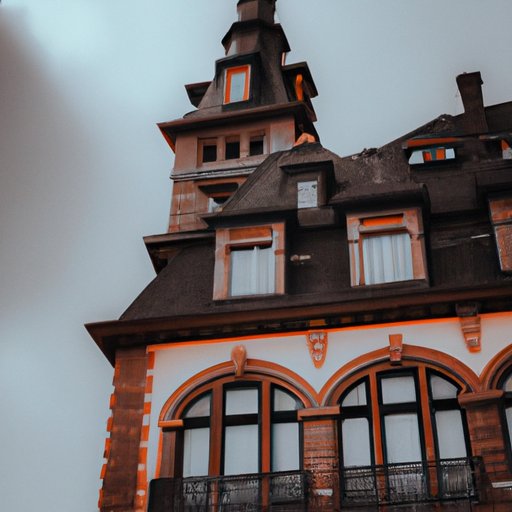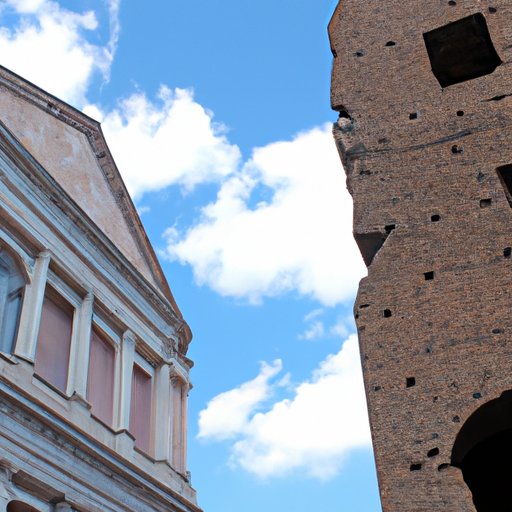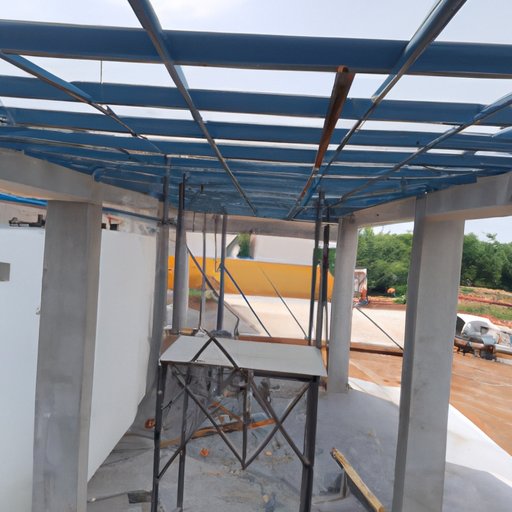Introduction
Architecture is the art and science of designing and constructing buildings and other physical structures. It encompasses a wide range of disciplines, from engineering and design to urban planning and landscape architecture. As such, it is a complex and diverse field with a long history dating back to ancient times.
In this article, we will explore what architecture is, the elements of architectural design, the different types of architecture, and how architects create functional and aesthetically pleasing structures. We will also look at the evolution of architecture and the impact it has had on society.
An Overview of Architecture: What It Is and How It Works
At its core, architecture is the process of planning, designing, and constructing structures. This involves taking into account a variety of factors, including the function of the structure, the materials used in its construction, the size and shape of the building, the available space, the local climate, and the desired aesthetic. Architects must also consider the safety and stability of the structure, as well as the economic feasibility of the project.
In order to achieve these goals, architects must have a thorough understanding of the elements of architecture. These include form, space, materials, light, and color. Each element contributes to the overall design of the structure and must be carefully considered when creating a functional and aesthetically pleasing building.

Exploring the Different Types of Architecture
Architectural styles have changed over time, reflecting the changing needs and aesthetics of different cultures and societies. The earliest known examples of architecture date back to prehistoric times, when humans first began to build shelters and rudimentary structures. From there, the development of more advanced structures led to the emergence of ancient Greek and Roman architecture, which featured grand monuments and temples.
The Middle Ages saw the emergence of Gothic and Romanesque architecture, which were characterized by large churches and cathedrals featuring intricate details and ornamentation. By the Renaissance period, architecture had shifted towards a more classical style, with symmetrical designs and grandiose palaces. In the modern era, architecture has become increasingly diverse, with a variety of styles ranging from traditional to contemporary.

The Evolution of Architecture: From Ancient Times to the Present
Over the centuries, architecture has evolved in response to changes in technology, materials, and societal needs. For example, the introduction of steel and reinforced concrete in the 19th century enabled the construction of taller and more complex structures. In the 20th century, advances in computer-aided design and digital fabrication allowed for the creation of even more ambitious projects.
Technology has also had an impact on the aesthetics of architecture. For instance, the use of glass and other transparent materials has resulted in a more open and airy look, while the emergence of new materials such as plastic and metals has enabled architects to experiment with bolder forms and shapes.

How Architects Create Functional and Aesthetically Pleasing Structures
The goal of any architect is to create structures that are both functional and aesthetically pleasing. To do this, they must take into account the principles of design, which include balance, unity, contrast, rhythm, emphasis, and scale. They must also consider the role of materials, such as wood, stone, metal, or glass, and how they can be used to create a desired effect.
The creative process of designing a structure is often a long and complex one. Architects must take into account a variety of factors, from local building codes and regulations to the availability of materials and labor. They must also consider the cost of the project and the timeline for completion. Ultimately, however, the goal is to create a structure that meets the needs of the people it serves.
What are the Benefits of Good Architecture?
Good architecture can have a positive impact on its surroundings. Well-designed structures can enhance quality of life by providing comfortable and safe living and working environments. They can also improve efficiency by reducing energy costs and making the best use of available space. Additionally, well-designed buildings can increase property values, making them attractive investments.
Exploring the Impact of Architecture on Society
In addition to its practical benefits, architecture can also have a profound impact on society. It can serve as a reflection of a culture’s values and beliefs, as well as its aspirations and dreams. Great works of architecture can inspire creativity and awe, and even act as symbols of progress and prosperity.
The Art and Science of Architectural Design
Ultimately, architecture is both an art and a science. Architects must combine their creative vision with technical knowledge and expertise in order to create functional and aesthetically pleasing structures. It is a complex and challenging field, but one that can also be incredibly rewarding.
Conclusion
Architecture is a fascinating and complex field. It involves the careful consideration of a variety of elements, from form and space to materials and light. There are many different types of architecture, each with its own unique characteristics and influences. By understanding the art and science of architectural design, we can better appreciate and enjoy the structures that surround us.
(Note: Is this article not meeting your expectations? Do you have knowledge or insights to share? Unlock new opportunities and expand your reach by joining our authors team. Click Registration to join us and share your expertise with our readers.)
